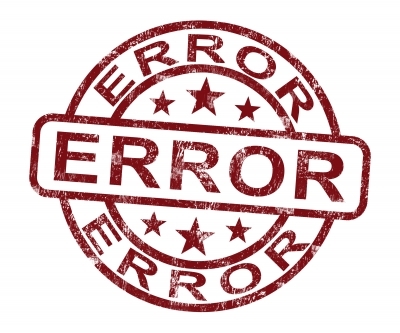 Image courtesy of Marin/FreeDigitalPhotos.net
Image courtesy of Marin/FreeDigitalPhotos.net 1. Don’t Qualify Your Statements.
Which sentence makes you believe me more?
a) Avoid qualifiers.
b) Maybe you should think about not using so many qualifiers.
Try to steer clear of “maybe,” “might,” “seems,” “could,” or “probably.” While your intent may be to offer choices and not seem pushy, qualifiers can give people a reason to doubt you. You are an expert in your field. Show why people can trust you. Be ready to back up your claims.
2. Don’t Rely on the Passive Voice.
In most cases, you want to use the active voice. It is easier to follow and more interesting to read. The only one who gets the point across consistently with the passive voice is Yoda the Jedi Master in the Star Wars series.
But this isn’t a galaxy far far away, and brace yourself here...you are not Yoda.
I am not Yoda.
In the real world, before deciding active versus passive, you must ask yourself, “Who or what is the point?” If there are legitimate reasons for using a passive voice and it aids readability, then use it. Otherwise, keep an active voice.
3. Know Your Business and Your Audience.
If you can answer these questions about your company, then you’ll have a solid foundation for your business voice.
1. Who will be reading this?
2. What are their motivations?
3. What do I want them to learn from this?
4. What image(s) do I want to promote for the company? Serious and trustworthy? Fun? Inspirational? Price Conscious? Convenient? Elite? Other?
Some of the largest food retailers have mastered the craft of voice because they know how to target their desired audience.
Take a look at these business voices:
Trader Joe’s:
“Some folks contemplate greatness. At Trader Joe’s we contemplate greenness. Through dark times and bumps in the road, we’ve discovered, via extended periods of contemplation, that it is indeed possible to achieve greatness in greenness.” – Fearless Flyer
Walmart:
“Breakfast food. Rise and Shine with eye-opening savings on breakfast food at Walmart. Breakfasts food of all kinds costs less when you get them at Walmart.” – Cereal and Breakfast Food
Whole Foods:
“An Italian, whole-wheat pasta with an eye on the environment! DeLallo Biodynamic Pasta relies on the pure and ancient practice of sustainable farming for its wheat.” –Featured Products
In just a couple sentences we learned a lot about each of these companies. Trader Joe’s is a company of every-day people who are having fun. Walmart is friendly with unbeatable prices. Whole Foods is trustworthy, sustainable, and health-conscious. These are three very different business voices all about the same subject...food. These companies know who they are and what their consumers want, and convey that clearly in their business voices.
If you know your audience and yourself, it’s hard to go wrong. If you would like help with this very important project, Juniper Shore Publications can help you identify and craft your voice.




 RSS Feed
RSS Feed

